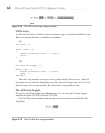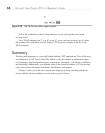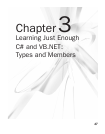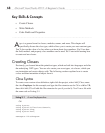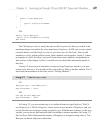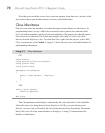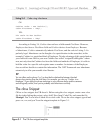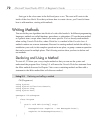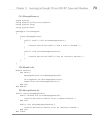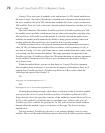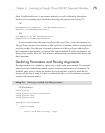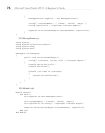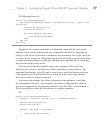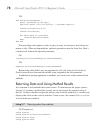
Chapter 3: Learning Just Enough C# and VB.NET: Types and Members 71
Listing 3-4 Code using inheritance
C#:
Cashier cashr = new Cashier();
cashr.FirstName = "May";
VB:
Dim cashr As New Cashier
cashr.FirstName = "May"
According to Listing 3-4, Cashier does not have a field named FirstName. However,
Employee does have a FirstName field and Cashier derives from Employee. Because
of inheritance, Cashier automatically inherits FirstName, and the code in Listing 3-4 is
perfectly legal. Inheritance can be thought of as specialization in the sense that, in this
example, Cashier is a specialized kind of Employee. To take advantage of this specialization,
you could add a new field to your new Cashier class called “assignedCashRegister” where
now, not only does the Cashier class have the fields and methods of Employee, it is able to
hold the value for a specific cash register name or number. An instance of the Employee
class would not be able to contain this information. The .NET Framework uses inheritance
extensively to offer you reusable class libraries.
TIP
You can often use the phrase “is a” to describe the relationship between inherited
classes when starting from the child class. For example, you can say “Cashier is an
Employee.” If you apply this phrase technique to your software design and the sentence
sounds logically correct, then you’ve probably used inheritance correctly.
The class Snippet
C# has a class snippet, but VB doesn’t. Before using the class snippet, create a new class
file by right-clicking the project, select Add | New Item | Code File, and name the file
Manager. You’ll now have a blank file to work with. To use the class snippet, type cl and
press
TAB, TAB; and you’ll see the snippet template in Figure 3-1.
Figure 3-1 The C# class snippet template




